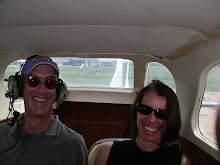
 Unsure of what a Research Visual/Multimedia for an international school librarian interested in improving student learning would entail, I began my search at Google Images with the search terms “international school libraries” (without quotation marks). The second image on the first page of results was published on a blog. Further research revealed that the image belongs to the Australian School Library Association (ASLA). It is the top image on this page.
Unsure of what a Research Visual/Multimedia for an international school librarian interested in improving student learning would entail, I began my search at Google Images with the search terms “international school libraries” (without quotation marks). The second image on the first page of results was published on a blog. Further research revealed that the image belongs to the Australian School Library Association (ASLA). It is the top image on this page.The image offers the perfect research visual because it places student learning at the center of a school library’s reason for existence. On the outer part of the circle, the library works in a cyclical manner to assess needs, conceive and deliver programs to address those needs, and evaluates the effectiveness of the programs delivered. As needs change, programs will change. Research in the form of a needs analysis for a particular international community could lead to the implementation of numerous programs, which could then be evaluated for their use and efficacy.
Additionally, the image contains four “tracks” surrounding and influencing the central core constituency of “learners and learning”: teachers and teaching, resourcing the curriculum, developing the physical environment, and providing access to information. Each of these areas offers a myriad of research opportunities. A quick scan of the titles of School Libraries Worldwide or School Library Journal articles and issue themes reveals a great deal of attention paid to these areas.
Copyright information: Australian School Library Association (ASLA), 2004. No further information was provided on the image, nor did the website mention any restrictions regarding the use of the image.
For the second image above, I used the search terms “international school libraries and instruction” (again without quotation marks) on Google Images. On the second page of results was a chart that had accompanied an article in the School Library Journal. Entitled “The SLJ Spending Survey” and written by Marilyn L. Shontz and Lesley S.J. Farmer, the article appeared in the January 1, 2007 issue and provides a snapshot of school libraries based on research conducted in the 2004-2005 academic year.
Pertinent to the digital age, Table 10 is based on research into school library computer use for teaching and learning. This research spurred thinking in two areas: how to assess computer use accurately and how to target certain areas, such as increasing the use of school-provided databases. Assessing computer use could be problematic in that student and teacher self-perceptions of their use of library computers may not correspond to their actual use. Additional instruments would have to be created to harvest more objective data.
As for the difference in the percentages of web searching and using school databases (82% and 39%, respectively), information received here would allow the librarian to begin designing and implementing programs to increase the use of school databases. If we combine this with the four “tracks” mentioned in the discussion of the first image above, it is possible to conclude that a small action research project would involve teachers and teaching, resourcing the curriculum and providing access to information.
Each of these visuals could form research areas for the school librarian, either for conducting his or her own original research or for accessing published research on these topics.
Copyright information:
Shontz, M.L. and Farmer, L.S.J. (January 1, 2007). The SLJ spending survey. School Library Journal. Retrieved March 21, 2009 from http://www.schoollibraryjournal.com/article/CA6403260.html.

No comments:
Post a Comment